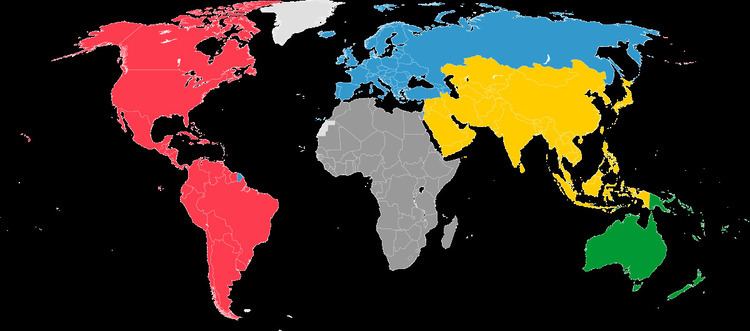The FIBA 3x3 World Championships is the largest tournament for 3x3 Basketball. 3x3 Basketball is a new initiative by FIBA to help make basketball a more versatile sport. The debut FIBA 3x3 World Championship was held in August 2012 in Athens, Greece. The tournament will be played every two years. The current champions are Serbia in the men's division and Czech Republic in the women's division.
In the FIBA 3x3 World Championships there are two events for men and women. Each team has 4 players (3 on court, 1 bench). In the first edition there was a mixed event where each team composed of 2 men and 2 women. The match is played on a half court and every rule applies as well as a 12-second shot clock and clearance needed on a new possession. 3x3 Basketball has been responded to well by the international basketball community and there has even been talk of the possibility of 3x3 Basketball being an Olympic Event.
FIBA releases from time-to-time a 3x3 supplement to its official basketball rules. The rules state that regular FIBA rules apply to all situations not specifically addressed in the FIBA 3x3 rules. The current set, both in an abbreviated version and longer format, has been published in early 2014 and a video has been posted on YouTube.
Under the 2014 rules, the departures from regular full-court basketball are as follows:
Each team consists of three players and one substitute.
The game is played on a half-court, with one basket.
A size 6 basketball (circumference of 727–734 mm/28.5–29.0 in) is used for all divisions, including men's competitions. This is the standard size for women's basketball, and smaller than the size 7 standard (749–780 mm/29.5–30.7 in) used in the full-court men's game.
A jump ball is not used to start the game. Instead, a coin toss is held immediately before the game. The winning team can choose to take possession of the ball at the start of the game, or take the first possession of a potential overtime period.
There are no jump balls at any time in the game; neither is there an alternating possession rule. In any held ball situation, the defensive team is granted possession.
Every successful shot inside the arc is awarded one point, while every successful shot behind the arc is awarded two points.
The game is a single period of 10 minutes with sudden death at 21 points. The winner is the first team to score 21 or the team with the highest score at the end of the 10 minutes. A tie in regulation leads to an untimed overtime period, which is won by the first team to score two points in overtime. Note that if a game is tied at 20 at the end of regulation, reaching 21 does not end the games.
Game play starts with the defensive team exchanging the ball with the offensive team behind the arc. This exchange is also used to restart the game from any dead ball situation. If a foul is committed that results in the non-fouling team retaining possession — i.e., a technical or "unsportsmanlike" foul (the latter essentially the same as the "flagrant foul" of North American rule sets) — the non-fouling team will receive the exchange.
A 12-second shot clock is used.
If the defense gains possession of the ball within the arc, by a steal, a block or a rebound, the team must move the ball behind the arc before being allowed to take a shot.
After a made goal or free throw (except for technical or unsportsmanlike fouls and team fouls 10 or more), play restarts with a player from the non-scoring team taking the ball directly under the basket and then dribbling or passing it to a point behind the arc. The defense is not allowed to play for the ball inside the block/charge semi-circle under the basket.
The only common feature between the substitution procedure in full-court and 3x3 is that it can occur only in a dead ball situation. In 3x3, a substitute can only enter from behind the end line opposite the basket, and the substitution becomes official once the player leaving the game has made physical contact with the substitute. Unlike the full-court game, no action from referees or table officials is required.
Each team is allowed one timeout. (The officials may still stop the game in case of player injury or other dangerous situations, as in the standard FIBA rules.)
Individual personal foul counts are not kept. In other words, players cannot be disqualified on the basis of personal fouls. However, a player who commits two unsportsmanlike fouls is disqualified.
Fouls during the act of shooting inside the arc are awarded 1 free throw, whilst fouls during the act of shooting behind the arc are awarded 2 free throws. However, team fouls 7, 8 and 9 are awarded two free throws, whilst team fouls 10 or more are awarded two free throws and possession of the ball.
Technical fouls (including unsportsmanlike fouls) result in two free throws plus possession of the ball, as in the standard full-court game.
Men's
Women's
Mixed

